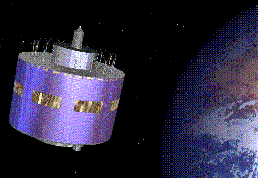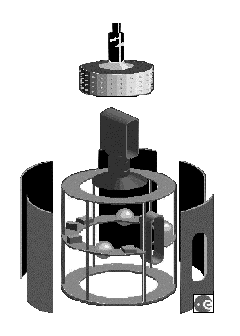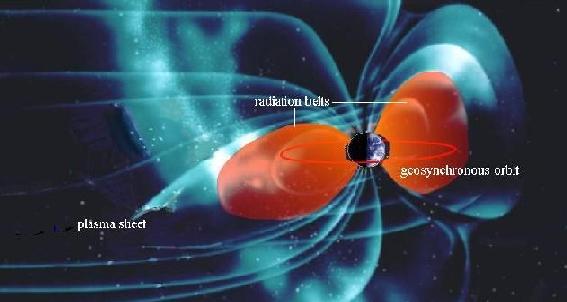Meteosat 3
The mission
 Meteosat 3 was one of a series of European Space Agency
weather satellites. It was launched in June 1988 and
operated in geostationary orbit until being decommissioned in
November 1995.
Meteosat 3 was one of a series of European Space Agency
weather satellites. It was launched in June 1988 and
operated in geostationary orbit until being decommissioned in
November 1995.
An electron detector, the SEM-2, was included in the payload as part of a spacecraft charging study.
 Meteosat 3 began as a prototype of Meteosat 2 and was later made
flight-worthy. It was spin stabilised at 100 RPM and equipped with a
visible-infrared radiometer and a meteorological data collection system.
It was placed in a geostationary orbit (inclination to the equatorial plane
(1.7degrees), 36000km above the Earth's surface. Click the image to see
an exploded view of a Meteosat satellite.
Meteosat 3 began as a prototype of Meteosat 2 and was later made
flight-worthy. It was spin stabilised at 100 RPM and equipped with a
visible-infrared radiometer and a meteorological data collection system.
It was placed in a geostationary orbit (inclination to the equatorial plane
(1.7degrees), 36000km above the Earth's surface. Click the image to see
an exploded view of a Meteosat satellite.
SEM-2
The SEM-2 (Spacecraft Environment Monitor) was provided by the Los Alamos National Laboratory, and was identical to the Low Energy Electron unit on the Energetic Particle Detector, flown on the Defense Support Program series of satellites. MSSL provided the electronics and the calibration for the SEM-2.
The instrument consisted of 5 telescopes, each comprising a collimator, an alumized mylar window (which stops ions) and a surface-barrier detector, and each with a viewing angle of 5 degrees. The telescope positions, at 30, 60, 90, 120 and 150 degrees to the satellite spin axis, provide polar coverage while azimuthal coverage is provided by the 600-second spin of the spacecraft.
The SEM-2 Data Set
The data from the Spacecraft Environment Monitor (SEM-2) instrument is of interest to the MSSL Space Plasma Physics Group because Meteosat's orbit lies in the outer radiation belts, where it encounters trapped electrons, the inner edge of the plasma sheet and occasionally even the magnetopause. The SEM-2's energy range observes both trapped radiation belt electrons and freshly injected electrons when substorms occur.

The energy range of the detector is 42.9-300keV, which is divided into five differential energy ranges by discriminators. Data is available at high time resolution (500s, 500s, 600s averages) and low time resolution (30 minute averages). The archived data set contains omnidirectional flux for the five energy ranges, plus 3D data (30 polar-azimuthal bins) for the complete energy range, as well as anisotropy information. The data set is complete from launch in June 1988 to November 1995, with the exception of March and April 1991, when the instrument was switched off, and July 1995. Although the data are not of very high time resolution, they do provide a long term data set which is useful for statistical studies.